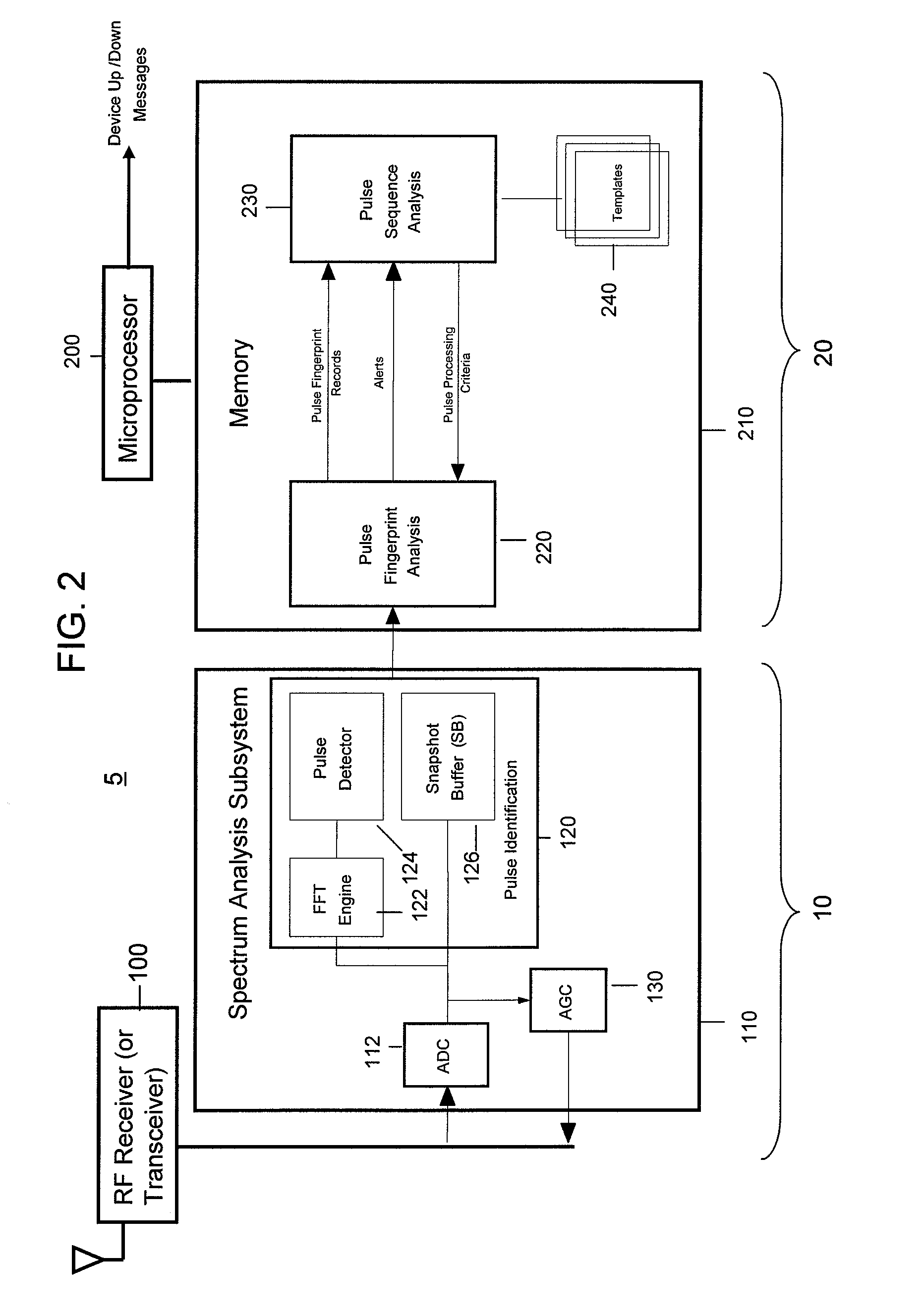System and Method for Identifying Wireless Devices Using Pulse Fingerprinting and Sequence Analysis
- Summary
- Abstract
- Description
- Claims
- Application Information
AI Technical Summary
Benefits of technology
Problems solved by technology
Method used
Image
Examples
Embodiment Construction
[0064]Referring first to FIG. 1, a system is shown comprising one or more radio sensor devices, hereinafter simply called sensors, 5 that are positioned throughout a region of interest 40. The region of interest may be inside a building or in an outdoor environment. Each sensor device 5 is a receiver device that may take on the form of a card device 10 and a host computing device 20. Alternatively, the functions of the card device 10 and host computing device 20 may be integrated into a single unit. One or more of the sensors may report data to a central computing device or server 50 via a wired or wireless link (not shown for simplicity). There are one or more devices, shown at reference numerals 60(1) to 60(N), that may be transmitting or emitting radio frequency (RF) energy in the region of interest 40 and it is desirable to be able to identify these devices based on RF energy received by at least one of the sensors 5.
[0065]Turning to FIG. 2, a block diagram of the significant co...
PUM
 Login to View More
Login to View More Abstract
Description
Claims
Application Information
 Login to View More
Login to View More - R&D
- Intellectual Property
- Life Sciences
- Materials
- Tech Scout
- Unparalleled Data Quality
- Higher Quality Content
- 60% Fewer Hallucinations
Browse by: Latest US Patents, China's latest patents, Technical Efficacy Thesaurus, Application Domain, Technology Topic, Popular Technical Reports.
© 2025 PatSnap. All rights reserved.Legal|Privacy policy|Modern Slavery Act Transparency Statement|Sitemap|About US| Contact US: help@patsnap.com



